We continue celebrating Women’s “Harp Guitar” History Month with past players of what has become today’s most popular vintage HG: the W. J. Dyer & Bro. Symphony harp guitar! As I’ve found just four female players to date, I’ll follow them with the related Dyer predecessors – the Knutsen hollow arm harp guitars. (All but the first and last images have been previously posted throughout the site.)
I’ve been asked, “How do you know they were harp guitar players and were not just holding them?” Great question! We don’t. We can’t always reliably distinguish between authentic guitar players and someone obviously just holding a “prop instrument.” Context is often a clue (I’m talking here just about the unnamed, anonymous people so commonly discovered in the many postcards and photos).
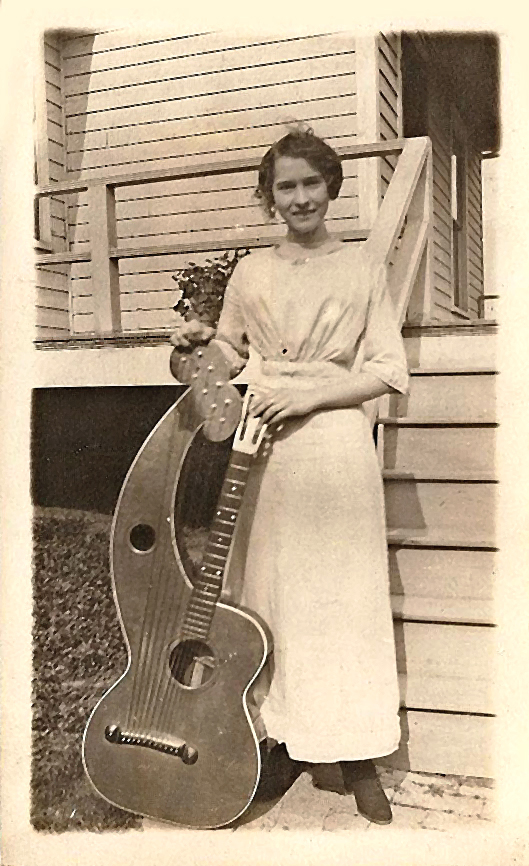
For example, the first woman shown could indeed just be “posing” with someone’s Dyer…but, why? She could just as reasonably be the proud owner and wanted to go outside in the sunlight to snap a photo.
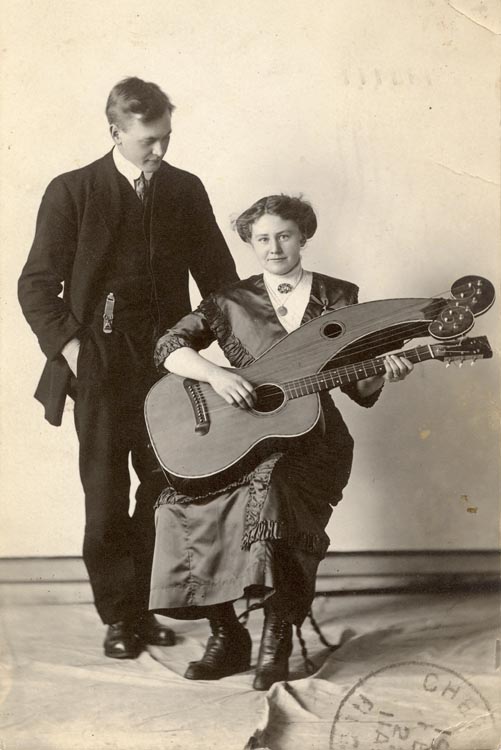
The second woman is certainly posing – with her husband or suitor – but did someone hand her a prop? Or – because she seems to know how to hold a guitar – is she one of the hundreds of examples of photographic evidence of musicians eager to capture their “art” or pastime? (It is too bad she’s not holding a chord with her left hand…but then, I typically don’t do that myself.)
The third image captures a family group that performed on radio. I have another pic of the husband “playing” the Dyer. Did the wife also? Or is she holding it for him? Did she just sing? We have no way to know. But when collecting such rare, esoteric images, does it necessarily matter?(!)
The fourth Dyer image speaks for itself (but how did it end up in England?).
If this is your first look at these images, I envy you. I remember well my first glimpse of each and every one, always a new priceless private treasure. The imagery! The mystery!
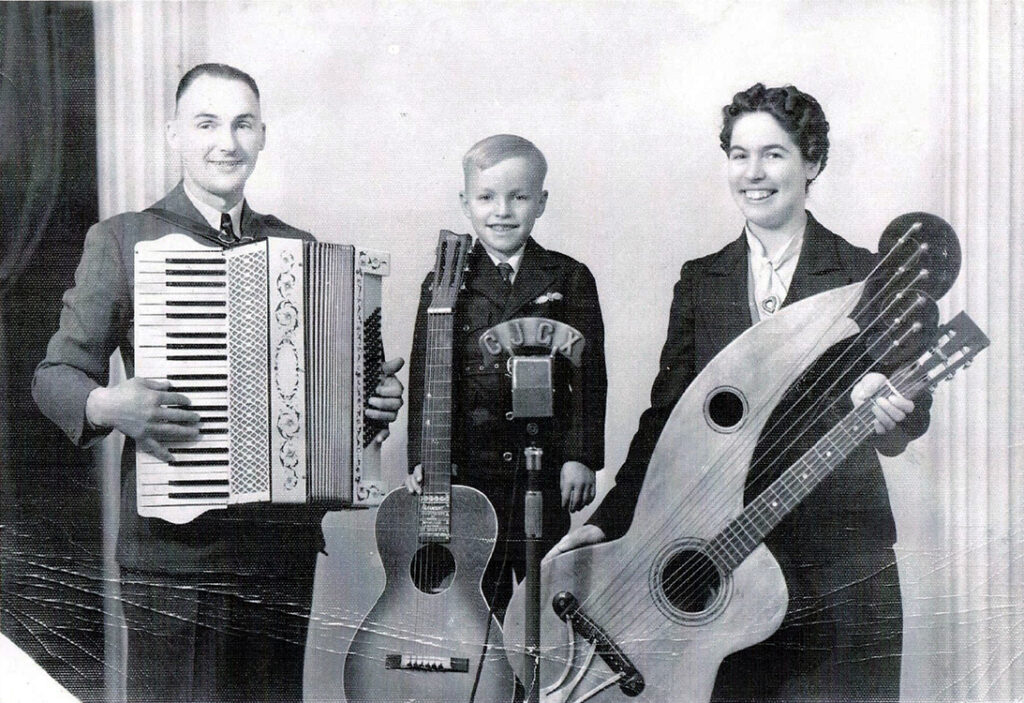
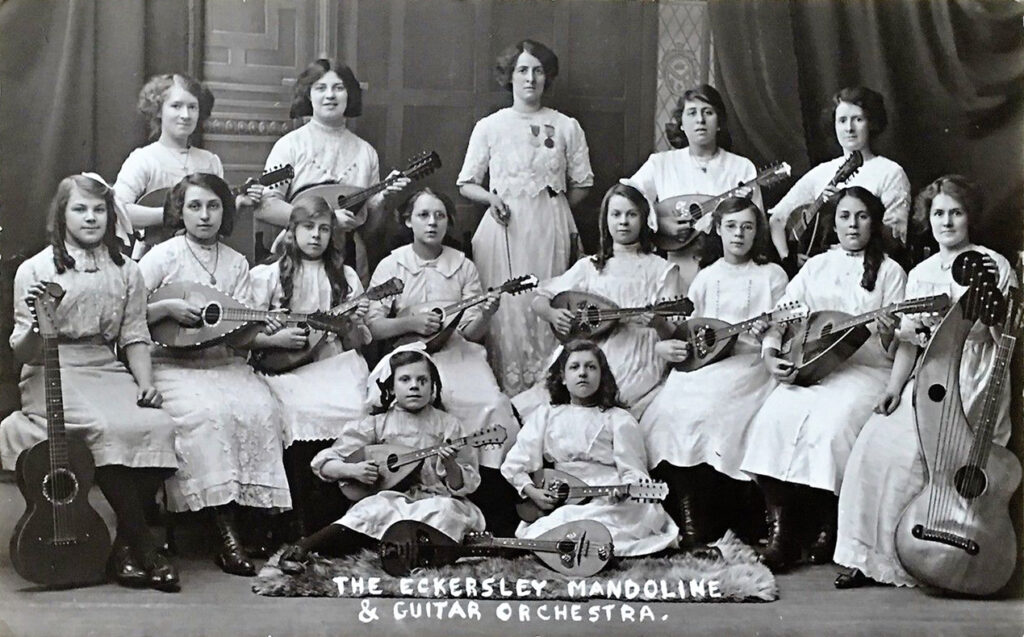
The Eckersley Mandoline & Guitar Orchestra of Bolton, England
Turning now to the harp guitars of Chris Knutsen in the 1890s, our first star is of course his wife, Anna – seen here in the mid/late 1890s and then in the big Lester Payne Orchestra concert of 1902 – each time with a different instrument.
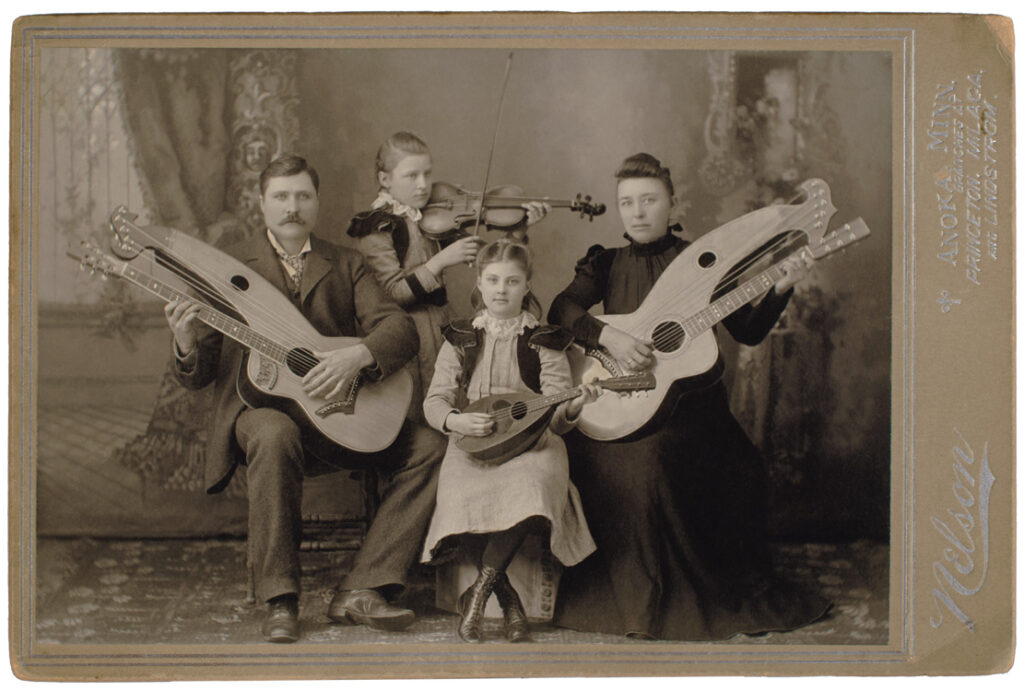
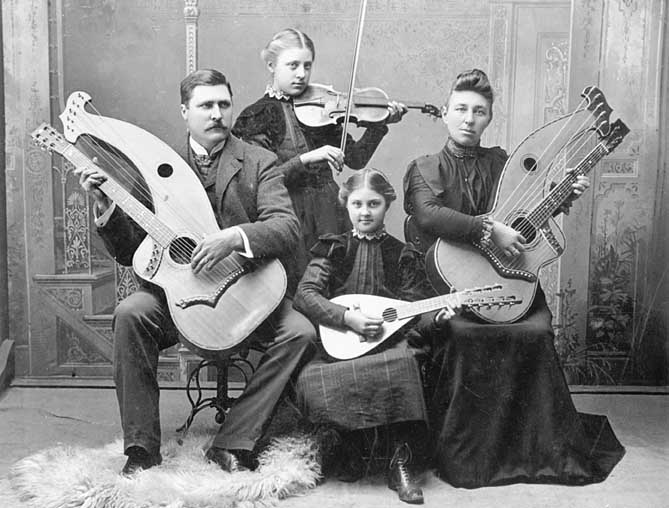
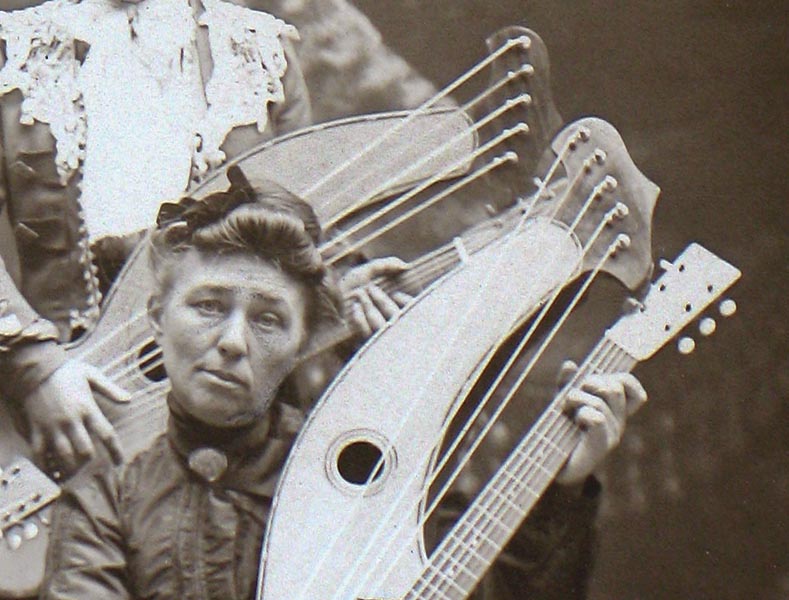
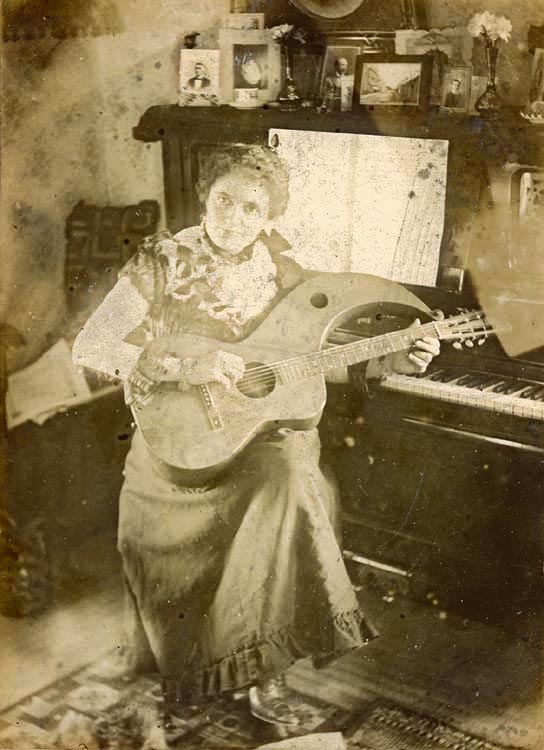
Above: While this isn’t a “true harp guitar,” it’s a rare representation of who played Knutsen’s original 6-string “One-Armed (Harp) Guitars.” The woman is anonymous.
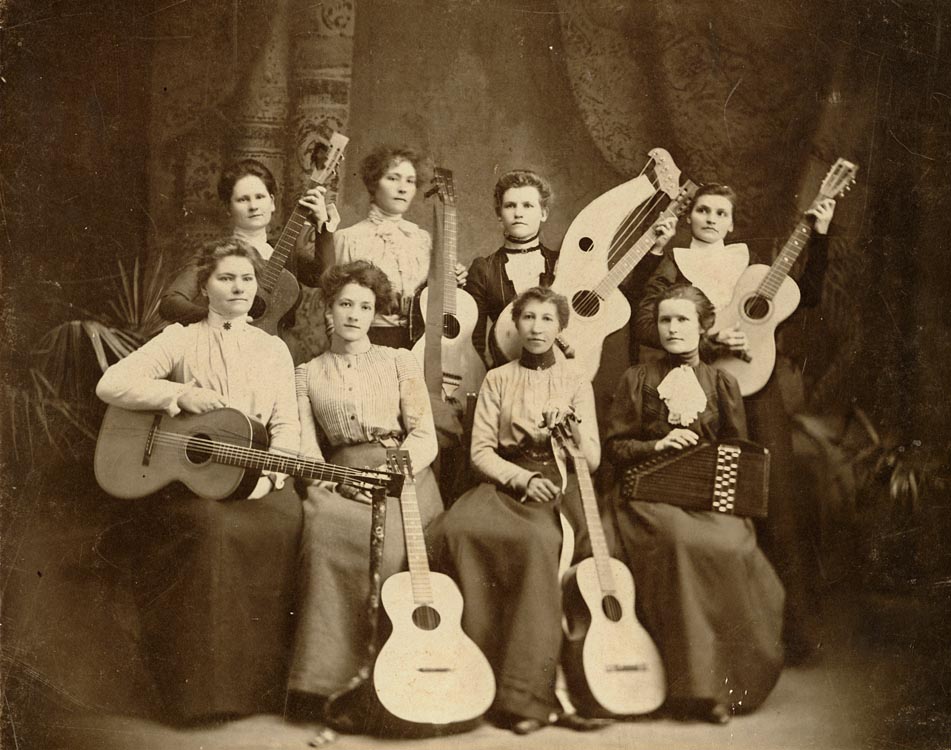
Anonymous group, circa 1900. I sold this beautiful cabinet card to colleague Amy Mills after she twisted my arm. As you can imagine, most of these images are from one-of-a-kind originals. I generally Photoshop each one for the site; some are worse, some are better in person. Either way, to me, these originals create such a stronger impression of the reality of what I am seeing (which, frankly, often looks simply unreal, doesn’t it?!). It’s tangible, tactile evidence that can create a visceral connection to the past that digital simply can’t touch. Come visit the museum someday and I’ll show you.
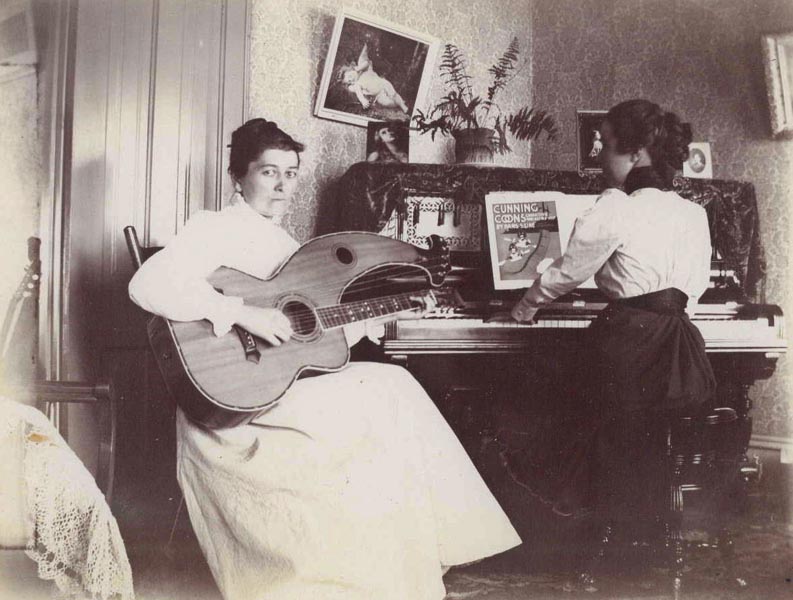
Courtesy of Minnesota’s Anoka County Historical Society: “Minnie Hill Beatty” with her brand new Knutsen harp guitar playing duets with a friend. A charming period photo…until one happens to notice their sheet music, a new “cakewalk” by Hans S. Line. Both the brand new harp guitar and the sheet music title appeared in 1900. I deliberated for some time before deciding not to “cancel culture” these women. I have a lot worse in my files, all of it part of the authentic history of the American harp guitar.
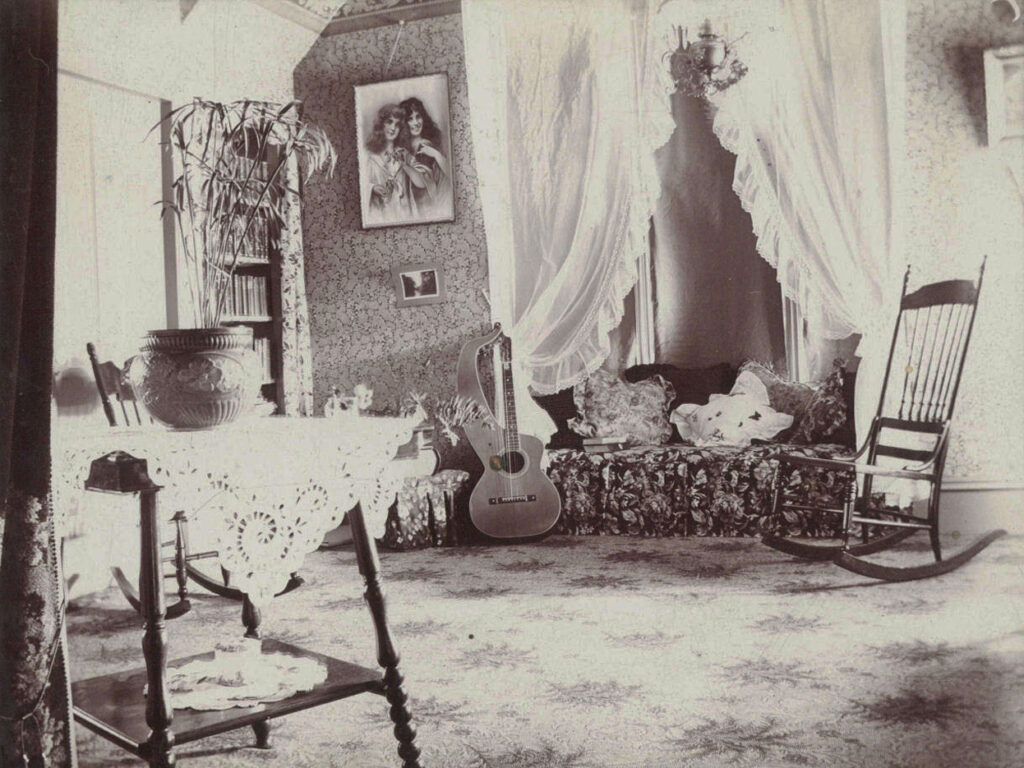
From the same batch of photos (all marked “1900”), perhaps another sitting room in Minnie’s home, this one with an earlier Knutsen harp guitar model.
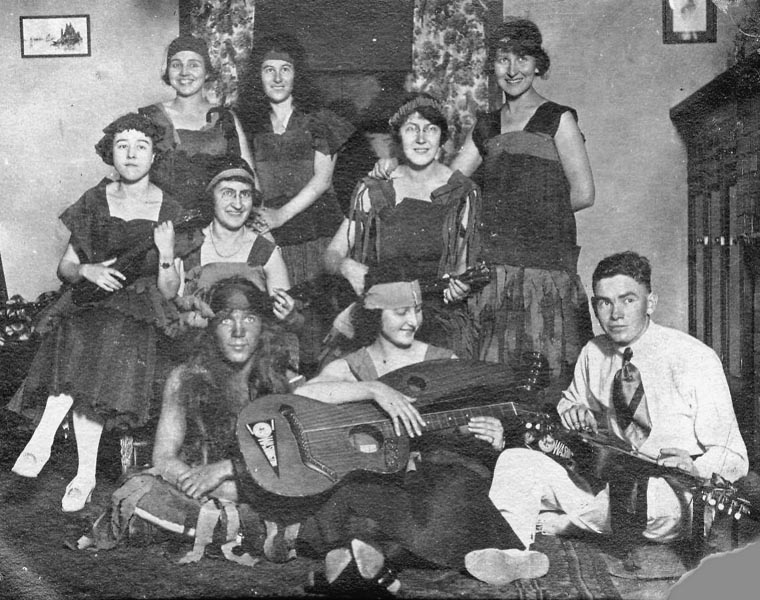
Circa 1920, courtesy of guitar scholar Peter Blecha, this is John Lee Coppock, a Hawaiian music steel player whose band member used this very harp guitar, an early Knutsen 18-string. The girls seem to have appropriated it as their mascot at Washington State College in Pullman, WA. I have no idea of the context or relationship.
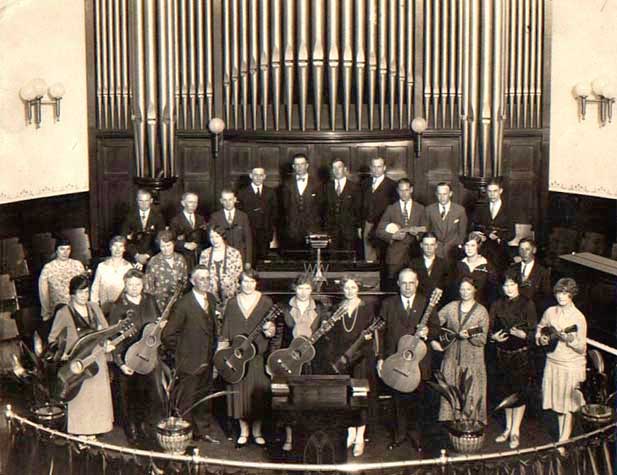
Gregory Furse inherited the c.1913 Seattle-made, “backward super-trebles” 18-string black-top Knutsen seen in this photograph. That’s the original owner, his grandmother Tina Sofia Bohman. There were a lot of Knutsens in evangelical churches.
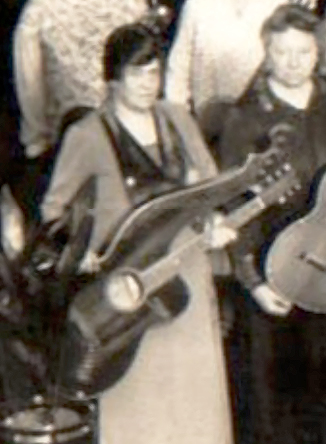
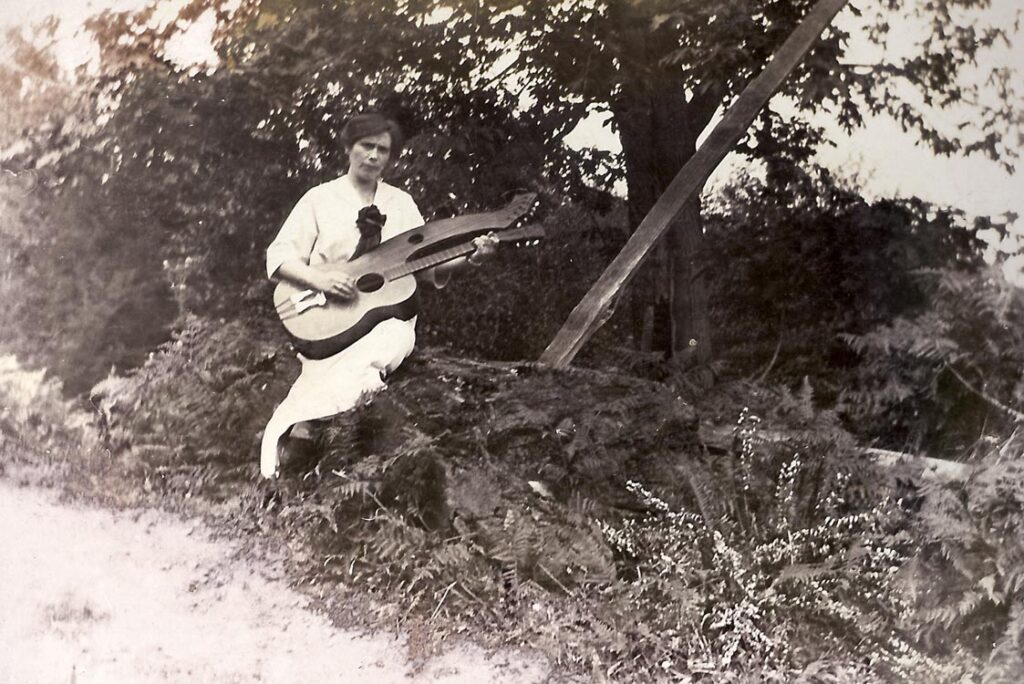
Typical of so many old photographs, we don’t know who this woman was – only that here is yet another unknown, untold story. In this case, the mystery is deepened by the source; it was passed down in a photo album of Otto Anderson’s family (the fellow who built many of Knutsen’s first few years of harp guitars; this was not one of them). This location is believed to be Port Angeles, WA.
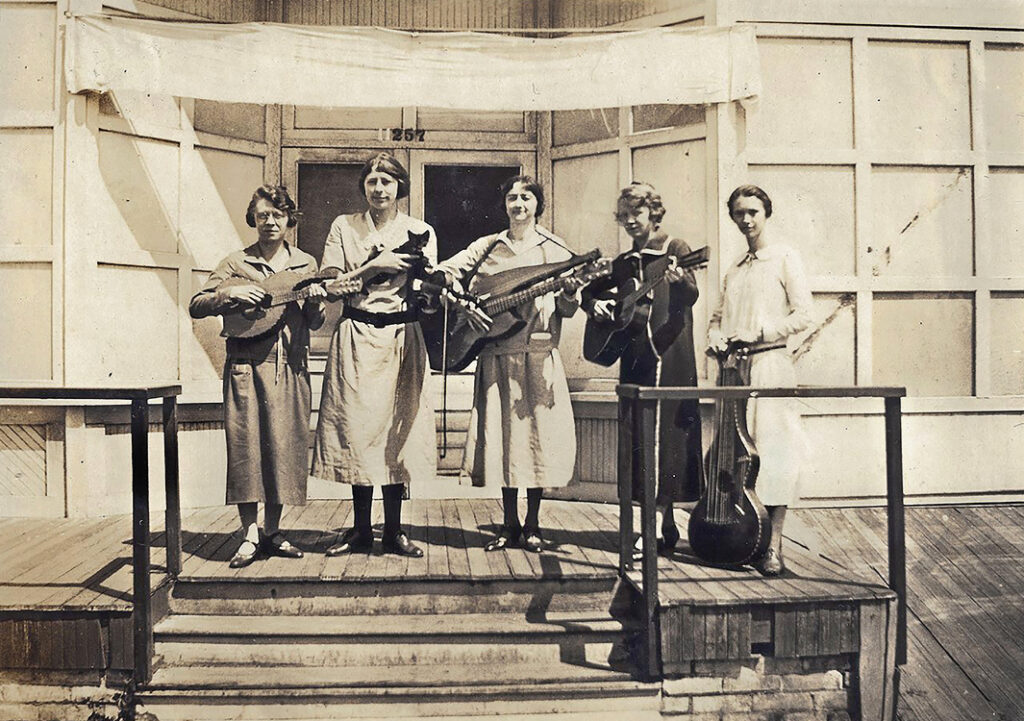
Another prize, courtesy of Amy Mills. This “porch band” plays a cat, a standard guitar, and three Knutsens – all from his post-1914 “New Hawaiian Family” period: harp mandolin, “convertible” harp steel (set up here for standard playing), and his typical harp steel.
A reminder (and commercial) that if you love these particular images and stories, many more appear in my book Norwegian Wood. Add the CD, and you’ll even hear what they all sound like!

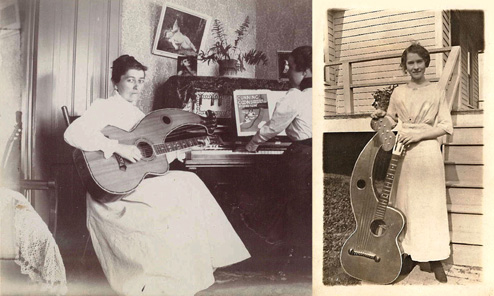
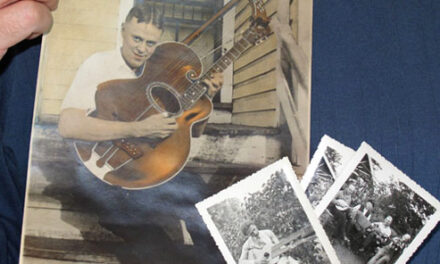
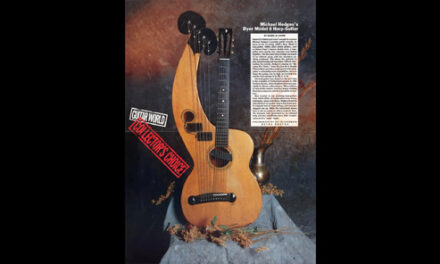
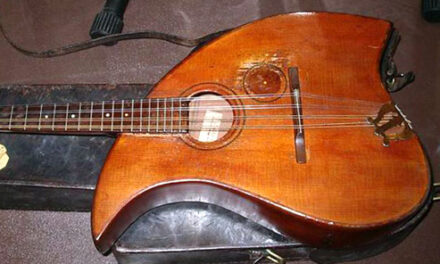
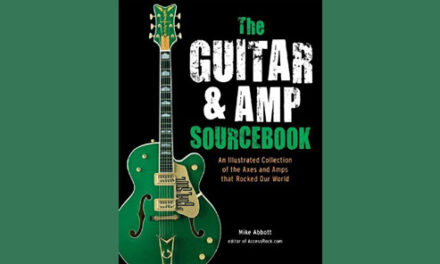
Another great and topical blog.